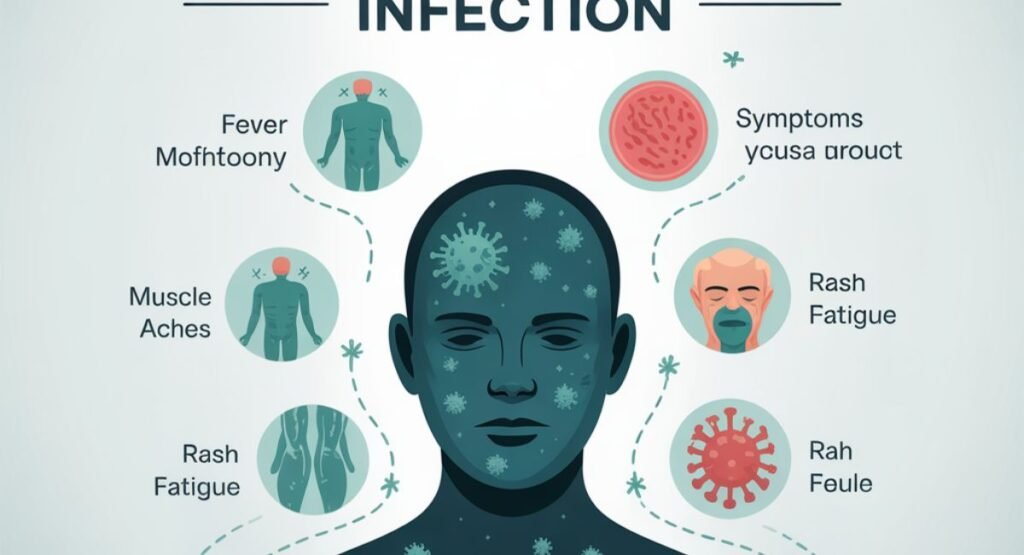What Is Oropouche Virus?
The Oropouche virus is a type of mosquito-borne virus mostly found in Central and South America. It spreads primarily through the bite of biting midges, especially a species called Culicoides paraensis. Some species of mosquitoes may also help in Oropouche virus transmission.
This vector-borne disease causes a tropical virus outbreak in certain parts of the world. It’s similar in symptoms to other Zika-like viruses, but with its own unique health effects. Due to the recent spread, it has become important for U.S. travelers to stay informed about this infection risk.

Key Facts You Should Know
There are currently no vaccines for Oropouche, which means preventing bites is the best way to stay safe. The virus causes Oropouche fever, which brings on severe headache and chills along with other discomforts.
It spreads quickly in humid environments through biting midges and is classified under tropical virus outbreaks. This Oropouche virus spread is often linked to places with poor mosquito control. U.S. health experts now include it in the CDC travel advisory list.
Geographic Distribution & Recent Outbreaks
The Oropouche virus has been reported in Brazil, Peru, Panama, Trinidad, and other Central and South American virus hotspots. These areas have conditions perfect for biting midges and mosquitoes to breed.
In recent years, tropical virus outbreaks have increased, with thousands of cases reported. Here is a summary of notable outbreaks:
| Year | Country | Reported Cases |
| 2020 | Brazil | 8,200 |
| 2021 | Peru | 6,500 |
| 2023 | Trinidad | 2,900 |
How Oropouche Virus Spreads
This mosquito-borne virus is mostly spread by biting midges like Culicoides paraensis, commonly known as no-see-ums. These tiny flies are hard to spot but easy to get bitten by.
While mosquitoes may also help with Oropouche virus transmission, the main concern remains these midges. There is also a recent concern about sexual transmission risk, although there are no confirmed cases yet. This makes it similar to Zika-like viruses.
Common Symptoms of Oropouche Infection
Oropouche symptoms start suddenly. People often experience fever and joint pain, severe headache and chills, and sometimes nausea. This is called an acute febrile illness, and it usually lasts about 2–7 days.
Symptoms may come back after recovery, which makes this vector-borne disease tricky. The virus has no specific treatment, so rest and hydration are important to manage Oropouche fever.
For Pregnant Travelers
There is a growing concern about Oropouche virus in pregnancy. Some studies, especially from Brazil, suggest it might cause congenital abnormalities such as microcephaly in newborns.
The CDC advises pregnant women to follow every CDC travel advisory and take extra steps in preventing insect bites. Delaying nonessential travel to outbreak zones is highly recommended.
Diagnosis & Testing Guidelines
A person with Oropouche symptoms and recent travel to a high-risk area should ask their doctor about diagnostic testing. Doctors often confuse this illness with dengue or Zika, so sharing travel history is crucial.
Testing is done using blood samples and may involve techniques like RT-PCR. This helps confirm the Oropouche diagnosis and ensures correct care. The tests are available through specialized labs and health departments.
How to Get Tested
If you’ve had an acute febrile illness after travel, let your doctor know. Ask about lab testing for Oropouche virus. Testing may be limited in some areas, so your doctor might consult the CDC or local health departments.
Here’s a simplified table for common tests:
| Test Type | Ideal Time Since Exposure | Purpose |
| RT-PCR | 1–5 days | Virus detection |
| ELISA | 6–10 days | Antibody detection |
Treatment Options Available
There are no vaccines for Oropouche, and there are no antiviral drugs either. The main approach is supportive care. Doctors usually recommend rest and hydration, plus over-the-counter pain relief like acetaminophen.
Avoid aspirin or NSAIDs, especially if there’s a risk of bleeding. For serious symptoms, hospitalization might be needed. Some people experience relapses, so continuous monitoring is wise.
Prevention & Protection Strategies
The only sure way to avoid Oropouche fever is preventing insect bites. Use insect repellent containing DEET. Wear long sleeves and avoid travel to places listed in the CDC travel advisory.
Using nets at night and staying indoors during peak midge hours also helps. There’s also concern about sexual transmission risk, so precautions are advised even after returning from outbreak zones.
Infection Control in Hospitals
In hospitals, infection risks must be handled with care. Health workers are advised to use protective gear. So far, there’s no strong evidence of human-to-human spread, but caution is key.
Hospitals in affected regions follow special cleaning protocols. Isolating patients showing Oropouche symptoms helps reduce spread within clinics.

Complications & Neurological Effects
Although rare, serious Oropouche virus complications can happen. Some people develop Guillain-Barré syndrome, neurological inflammation, or encephalitis. These cases are under study.
Long-term fatigue, singing fever, and joint pain are more common. While most people recover fully, the impact on daily life can be significant.
WHO & CDC Response
Both WHO and CDC are monitoring Oropouche virus spread closely. They are issuing new CDC travel advisory notices and working on better diagnostic tools.
Research is ongoing to create a vaccine. Until then, the focus is on education, surveillance, and preventing insect bites in vulnerable regions.
Resources for Everyone
The CDC offers resources for people in the U.S. who may be affected by Oropouche virus outbreaks or are planning travel to high-risk regions.
For the General Public
Travelers can access maps, prevention tips, and repellent guidance. Pamphlets are available in both English and Spanish for wider reach.
For Healthcare Providers
Clinicians get access to case definitions, treatment guidance, and diagnostic testing protocols. These are updated regularly on CDC platforms.
FAQs
What causes the Oropouche virus?
The Oropouche virus is caused by an arbovirus transmitted to humans through the bite of infected midges or mosquitoes.
What are the symptoms of the Oropouche virus?
Symptoms include high fever, headache, muscle pain, nausea, photophobia, and sometimes a skin rash, similar to dengue.
How serious is Oropouche?
Oropouche is usually non-fatal, but it can cause intense discomfort and recurring fever episodes; outbreaks may affect thousands rapidly.
Which disease is caused by the Marburg virus?
The Marburg virus causes Marburg virus disease, a severe and often deadly hemorrhagic fever similar to Ebola.



